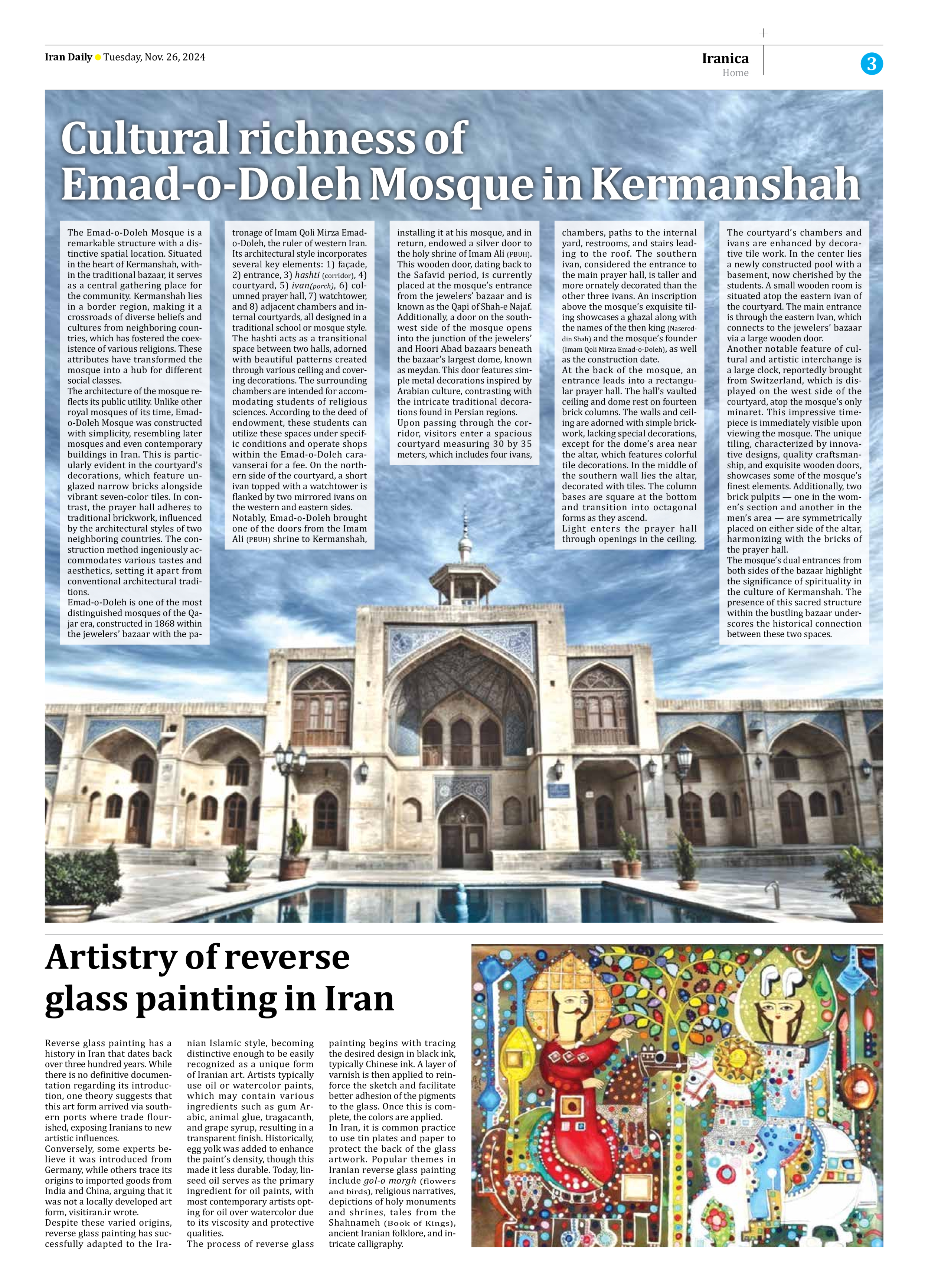
Copy in clipboard...
Artistry of reverse glass painting in Iran
Conversely, some experts believe it was introduced from Germany, while others trace its origins to imported goods from India and China, arguing that it was not a locally developed art form, visitiran.ir wrote.
Despite these varied origins, reverse glass painting has successfully adapted to the Iranian Islamic style, becoming distinctive enough to be easily recognized as a unique form of Iranian art. Artists typically use oil or watercolor paints, which may contain various ingredients such as gum Arabic, animal glue, tragacanth, and grape syrup, resulting in a transparent finish. Historically, egg yolk was added to enhance the paint’s density, though this made it less durable. Today, linseed oil serves as the primary ingredient for oil paints, with most contemporary artists opting for oil over watercolor due to its viscosity and protective qualities.
The process of reverse glass painting begins with tracing the desired design in black ink, typically Chinese ink. A layer of varnish is then applied to reinforce the sketch and facilitate better adhesion of the pigments to the glass. Once this is complete, the colors are applied.
In Iran, it is common practice to use tin plates and paper to protect the back of the glass artwork. Popular themes in Iranian reverse glass painting include gol-o morgh (flowers and birds), religious narratives, depictions of holy monuments and shrines, tales from the Shahnameh (Book of Kings), ancient Iranian folklore, and intricate calligraphy.







